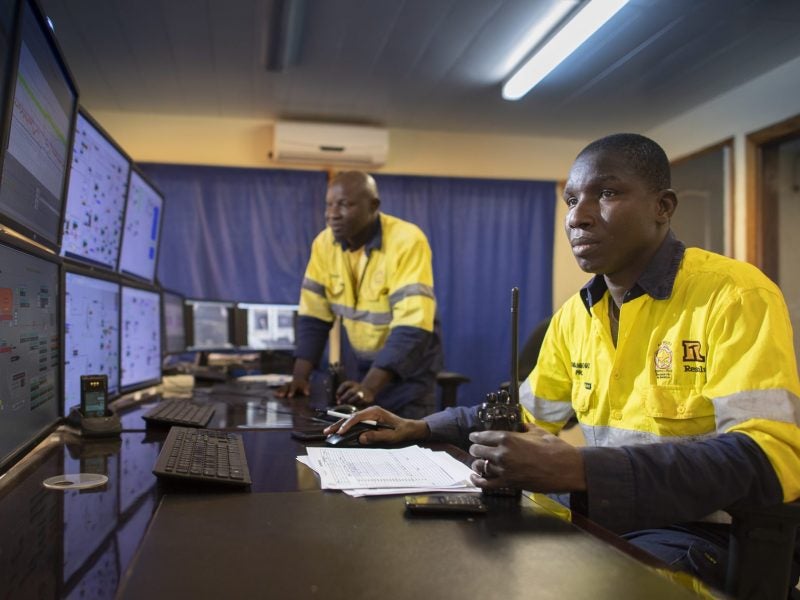
Pilbara, Western Australia
Uptake of automated mine solutions including self-driving haul trucks and remote operations centres has been slow but steady. One of the earliest moves into automation came with global mining giant Rio Tinto’s Mine of the Future initiative in 2008. From a remote operations centre in Perth, Western Australia, workers operate autonomous mining vehicles at mines more than 1,200km away in the Pilbara region of Western Australia.
Around a third of the haul truck fleet at Rio Tinto’s Pilbara mines are autonomous. These trucks can continuously track the locations, speeds and directions of other vehicles, meaning that material can be moved safely and efficiently – as well as more productively – without human presence.
Rio Tinto added a new facet to its automated operation in 2019 with the deployment of its AutoHaul system, which brought autonomous trains to the Pilbara project. The system is the largest autonomous railway in the world and can transport approximately a million tonnes of iron ore per day.
Pilbara is very much a hotspot of automation innovation, with commodity giant BHP also deploying several autonomous operations at their Pilbara mines as part of BHP’s Next Generation Mining programme. A GlobalData report found that mine operations in Australasia are some of the most technologically advanced in the world.
Syama Mine, Mali
The Syama underground gold mine, 80% owned by Resolute Mining with the Government of Mali holding the other 20% stake, became the world’s first fully-autonomous mine operation. Designed in partnership with Swedish engineering company Sandvik, the mine operates with fully automated trucks, loaders and drills.
The fully autonomous operation means that the mine can operate 24 hours a day, with all operations overseen from a remote operation centre. Resolute Mining says this keeps productivity high with relatively low costs, and the automated systems allow for consistent production output.
Sandvik provides two key product lines for mining companies looking to take a more hands-off approach. AutoMine covers all aspects of automation from individual pieces of equipment through larger machines to autonomous vehicle fleets. OptiMine, used at Syama and increasingly being adopted by other mining projects, seeks to improve efficiency in mining operations by providing a suite of analytics and process optimisation tools. Sandvik worked with IBM researchers to develop OptiMine, a system that has been adopted even in traditional, human-operated mines to improve analysis of production and processes.
Challenges ahead
Autonomous mining solutions appear attractive – they’re purported to improve efficiency, productivity and safety. Now that the Covid-19 coronavirus outbreak has made the immediate future of several mining operations around the world uncertain, there may be an increased appeal and demand for solutions to reduce the human workforce at mine sites, if only to prevent future crises from having such a detrimental effect on mining companies.
But barriers to autonomous operations remain. Projects like Resolute Mining’s Syama are well suited to automation because of the methods and processes used for extraction. Syama’s ore body dimensions suit sub-level caving mining, a top-down mining method that allows for fairly standardised repetitive processes. This means autonomous vehicles can follow largely the same route as they travel through the mine, and each individual automated unit can be seen as a cog in a larger machine. That is not the case for every mining project, and there are concerns among critics of automation that a human element is a vital part of safe, effective operations.
Another element that attracts criticism is the replacement of human workers with robots. While this cuts costs for the company, largely in the form of salary expenditure, there does remain the question of where mineworkers go to if their job is made obsolete by new technology. The benefit to local communities and governments of job creation when a new mining project is proposed is also a key factor in those projects getting the go-ahead; an autonomous operation removes part or all of that benefit.
Ultimately, the current issues around mine activities and closures in light of the Covid-19 pandemic are likely to have long-lasting effects on the global mining industry. Depending on how long this crisis lasts, the mining industry could see big moves into autonomous mining technologies in the not-too-distant future.



